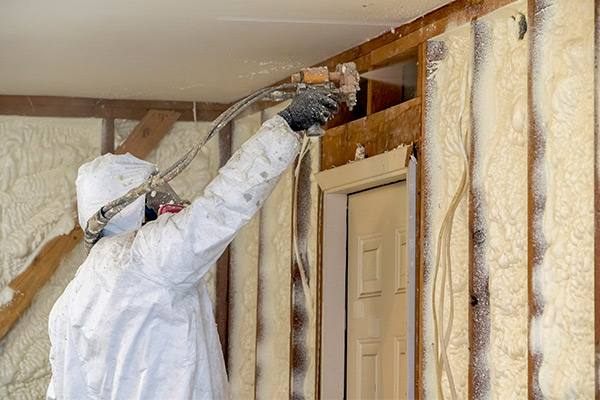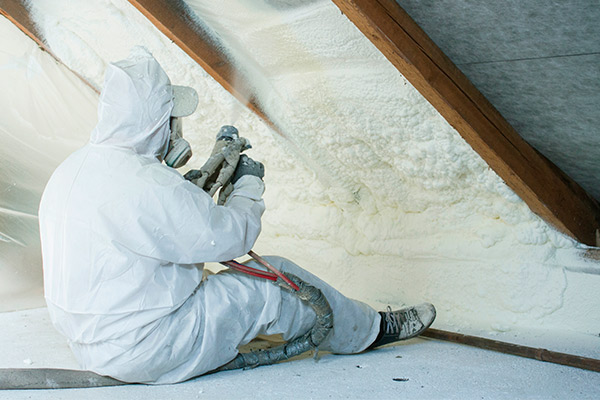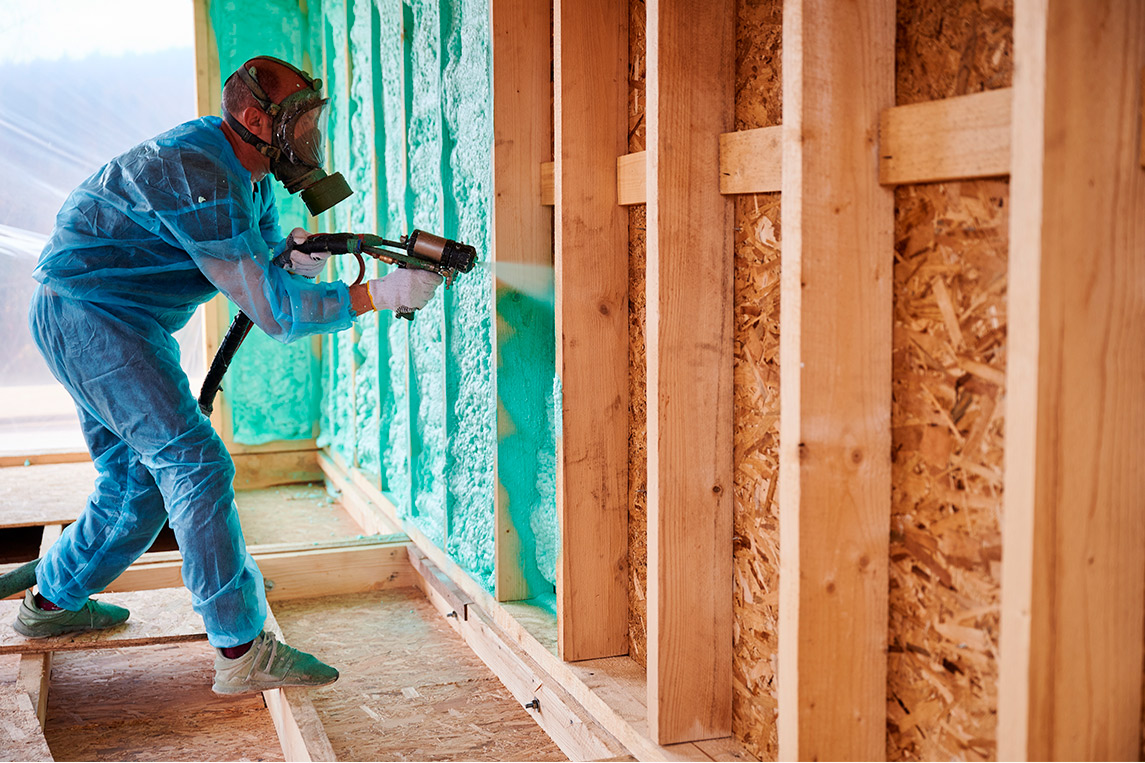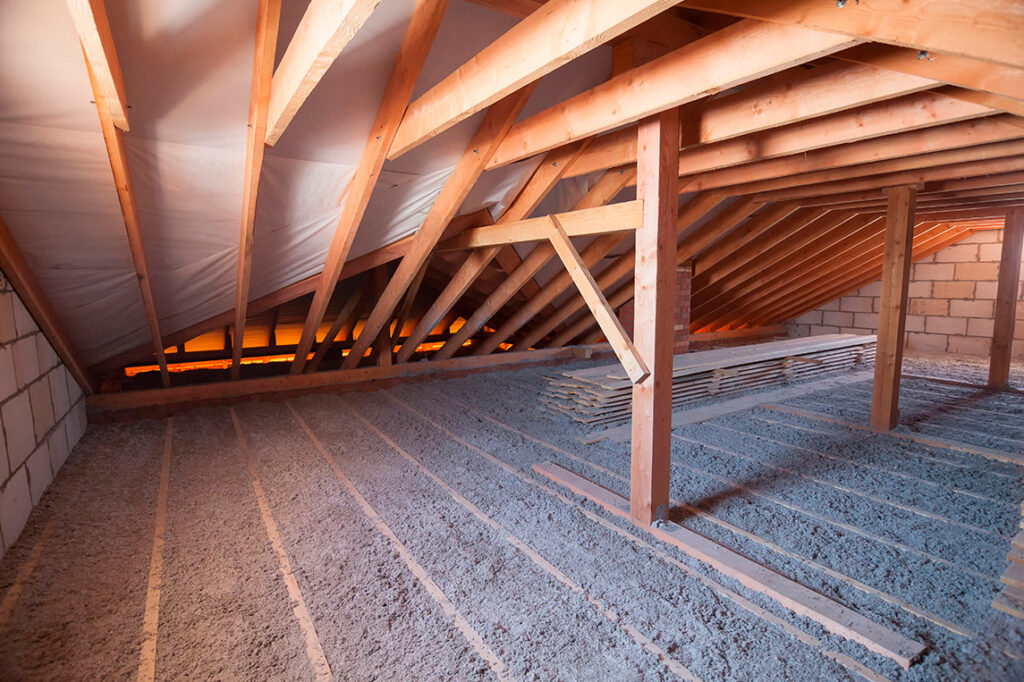The Rio Grande Valley experiences some of the most extreme climate conditions in Texas, with summer temperatures frequently soaring above 100°F for extended periods. Humidity levels add another layer of discomfort. For homeowners and businesses in McAllen, Edinburg, Mission, and surrounding communities, this poses unique challenges for maintaining comfortable indoor environments while managing energy costs.
Rising utility bills driven by heavy air conditioning use, make it increasingly necessary to adopt effective insulation strategies. In hot, humid regions like the RGV, cooling systems can account for up to 27% of monthly energy costs. With energy demands expected to grow by 8–13% over the next decade due to climate change, better insulation offers a practical solution to help manage future consumption.
- Without proper insulation, heat readily penetrates homes, forcing AC systems to work harder and driving up utility costs
- The region’s high humidity compounds these issues, potentially leading to moisture problems, mold growth, and structural damage
- Traditional insulation often falls short in addressing these specific regional challenges
Spray foam insulation offers a powerful solution specifically suited to the RGV’s demanding climate. By creating an airtight seal that blocks both heat and moisture infiltration, this advanced technology can reduce energy bills by up to 50% while maintaining consistent indoor comfort regardless of outdoor conditions.
Why Conventional Materials Struggle in the RGV

Traditional materials like fiberglass batts and blown cellulose may provide some thermal resistance, but they fail to meet the demands of the RGV’s combination of heat and humidity.
- Heat Transfer: Inadequate insulation allows hot outdoor air to infiltrate living spaces, forcing HVAC systems to run longer.
- Humidity Issues: High moisture levels can penetrate standard insulation materials, causing mold growth, wood rot, and indoor air quality problems.
- Energy Waste: Conventional materials permit air leakage, contributing to inconsistent indoor temperatures and increased electricity use.
Spray foam insulation, designed to form an airtight and moisture-resistant barrier, directly addresses these challenges.
How Spray Foam Insulation Works to Maximize Energy Efficiency
Spray foam insulation enhances energy efficiency through a combination of advanced materials and application methods. Its performance is driven by several integrated features that go beyond conventional insulation:
- Advanced Insulation Technology
- Spray foam insulation begins as a liquid mixture that rapidly expands when applied, creating a seamless barrier that conforms to every surface
- Available in two forms: open-cell (lighter, more flexible) and closed-cell (denser, more rigid), each offering specific benefits for different applications
- The expansion process allows the foam to fill even the smallest gaps, cracks, and crevices that would otherwise allow air leakage
- Creating an Airtight Thermal Envelope
- Unlike traditional insulation that simply slows heat transfer, spray foam creates a complete air seal that virtually eliminates air infiltration
- This airtight barrier prevents conditioned air from escaping and hot, humid outside air from entering your home
- By sealing the building envelope, spray foam reduces the workload on HVAC systems by up to 50%, significantly lowering energy consumption
- Superior Thermal Performance vs. Traditional Insulation
- Spray foam offers exceptional R-value (thermal resistance): 3.6-3.8 per inch for open-cell and 6.0-7.0 per inch for closed-cell, compared to fiberglass batts at only 2.9-3.8 per inch
- Unlike fiberglass or cellulose that can sag, shift, or absorb moisture over time, spray foam maintains its structure and performance for decades
- Traditional insulation allows air movement, while spray foam eliminates convective heat transfer, a major source of energy loss
- Climate-Specific Temperature Control for RGV
- In the RGV’s extreme heat, spray foam prevents hot attic air (which can reach 150°F) from infiltrating living spaces
- Creates consistent indoor temperatures by eliminating the hot and cold spots common with traditional insulation
- Closed-cell foam acts as a moisture barrier, essential in the RGV’s humid climate for preventing mold, mildew, and structural damage
Tips for Maximizing Spray Foam Savings in the RGV
To get the most value from your spray foam investment in the Rio Grande Valley, consider these essential tips:
1. Choose the Right Type of Foam
| Foam Type | Ideal Use Areas | Moisture Resistance | Cost Efficiency |
| Closed-cell | Attics, roofs, exterior walls | High | Higher upfront cost |
| Open-cell | Interior walls, soundproofing | Moderate | Lower upfront cost |
Closed-cell foam delivers better performance in humid and heat-exposed areas, while open-cell foam remains cost-effective for interior use.
2. Work with Experienced Local Installers
Spray foam installation is a specialized process. Choose local professionals who understand the unique needs of homes in the RGV. Proper installation ensures optimal energy efficiency and prevents moisture-related issues.
3. Prioritize High-Impact Areas
Target the most energy-leaking zones first:
- Attics and Roofs: Where most heat infiltration occurs.
- Exterior Walls: Prevents conductive and convective heat loss.
- Crawl Spaces and Ductwork: Reduce wasted energy from HVAC systems.
4. Take Advantage of Incentives
Investigate local, state, and federal incentives to reduce initial costs:
- Federal Tax Credits: Available for energy-efficient upgrades.
- Utility Rebates: Many Texas utilities offer cash-back programs.
- Local Grants: Some RGV municipalities provide support for green upgrades.
5. Inspect Regularly for Optimal Performance
Spray foam is long-lasting, but annual inspections are wise. Look for:
- Gaps or cracks due to shifting structures.
- Damage from rodents or severe weather.
- Any loss of adhesion or moisture intrusion.
.By following these guidelines, RGV homeowners can maximize both immediate comfort and long-term energy savings, with potential utility bill reductions of up to 50%.
How to Calculate Your Potential Spray Foam Savings in the RGV

Your potential savings start with evaluating your current energy use, particularly cooling costs. In the Rio Grande Valley, where cooling systems can account for nearly 27% of a home’s monthly utility bill, spray foam insulation can reduce energy use by up to 50% by sealing air leaks and improving thermal resistance. Start by reviewing 12 months of electricity bills to determine your average cooling cost, then apply a conservative savings estimate of 30–50% to see what you could retain annually.
For example, if your monthly energy bill averages $250, with $67.50 attributed to cooling, you could save between $20 and $33 per month, or $240 to nearly $400 per year, just on air conditioning alone. Online insulation savings calculators and energy audits from local professionals can provide more precise estimates tailored to your home’s size, construction, and usage patterns.
Simplified Spray Foam Savings Formula
Annual Savings =
(Average Annual Cooling Cost) × (Estimated % Reduction from Spray Foam)
Where: Average Annual Cooling Cost =
Monthly electric bill × % of bill from cooling × 12
- Estimated % Reduction = Typically between 30%–50% with spray foam
If you are looking to cut your energy bills and enhance comfort in your Rio Grande Valley home. Frontline Home Solutions offers top-notch spray foam insulation services that create an airtight seal, preventing heat and moisture infiltration. Our expert team, equipped with advanced tools and local climate knowledge, ensures a customized installation for maximum efficiency.
Experience up to 50% energy savings and enjoy consistent temperatures year-round. Transform your home into an energy-efficient haven! Contact us today to learn more about our services and start saving
 Spray Foam FAQs
Spray Foam FAQs
1. Is spray foam insulation safe for indoor air quality?
Answer:
Yes, when properly installed by certified professionals, spray foam insulation is safe and non-toxic. During the curing process (typically 24–48 hours), occupants should vacate the property to avoid exposure to off-gassing. Once cured, the foam becomes inert and does not release harmful fumes. Closed-cell foam also acts as a vapor barrier, helping to reduce airborne moisture and mold risk.
2. Can spray foam insulation be applied over existing insulation?
Answer:
In some cases, spray foam can be applied over existing insulation, particularly in attics where old fiberglass batts remain in place. However, for maximum performance and to avoid trapping moisture, professionals often recommend removing old or degraded insulation before application. A clean surface allows the foam to bond better and creates a more effective seal.
3. How long does spray foam insulation last?
Answer:
Spray foam insulation can last over 30 years with minimal maintenance. Unlike fiberglass or cellulose, it does not sag, compress, or degrade under typical conditions. Its longevity makes it a smart long-term investment for homeowners aiming to reduce energy costs and maintain comfort year-round.
4. Will spray foam reduce outside noise?
Answer:
Yes, spray foam insulation. especially open-cell foam, offers excellent sound-dampening qualities. It absorbs sound vibrations and reduces the transmission of airborne noise between rooms and from outside sources. This makes it a popular choice in homes near highways, schools, or other high-noise environments.
5. Can spray foam help with pest control?
Answer:
Yes, spray foam’s seamless barrier eliminates the tiny cracks and crevices that pests use to enter a home. While it is not a substitute for pest control, it does act as a physical deterrent against insects, rodents, and other small intruders, especially in attics, crawl spaces, and exterior walls.
6. Does spray foam work in metal buildings or commercial structures?
Answer:
Absolutely. Spray foam is commonly used in metal buildings, warehouses, and commercial properties throughout the RGV. It adheres well to metal surfaces, provides insulation against intense heat, and helps prevent condensation, a common issue in metal construction. Closed-cell foam is typically preferred for commercial or structural applications due to its rigidity and higher R-value.
7. How does spray foam affect resale value or home appraisals?
Answer:
Spray foam insulation can increase a home’s resale value by improving its energy efficiency and comfort. Many appraisers consider upgrades like energy-efficient insulation when determining home value, especially in climates like the RGV where utility costs are high. Homes with spray foam often receive better energy ratings, which appeal to environmentally conscious buyers.
8. Are there any downsides to spray foam insulation?
Answer:
While highly effective, spray foam insulation does come with a few considerations:
- Higher upfront cost compared to traditional insulation.
- Requires professional installation for optimal results.
- Potential for over-expansion if misapplied, which can damage walls or ceilings.
- Removal difficulty if future renovations require opening walls.
These drawbacks are typically offset by long-term savings, durability, and enhanced indoor comfort when installed by experienced professionals.


